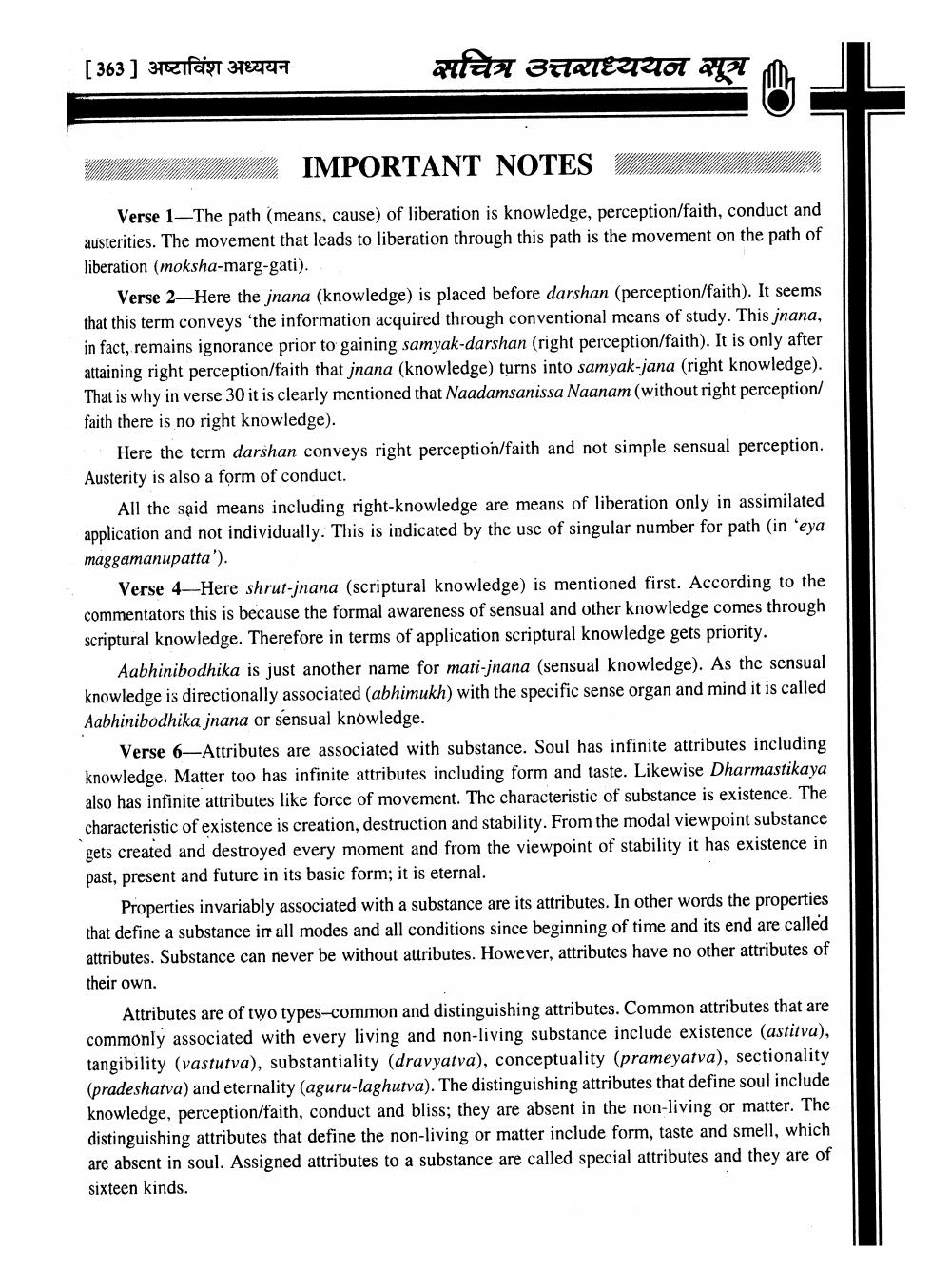________________
[363 ] 3te faigt 3ezera
सचित्र उत्तराध्ययन सूत्र
IMPORTANT NOTES
Verse 1-The path (means, cause) of liberation is knowledge, perception/faith, conduct and austerities. The movement that leads to liberation through this path is the movement on the path of liberation (moksha-marg-gati).
Verse 2—Here the jnana (knowledge) is placed before darshan (perception/faith). It seems that this term conveys 'the information acquired through conventional means of study. This jnana, in fact, remains ignorance prior to gaining samyak-darshan (right perception/faith). It is only after attaining right perception/faith that jnana (knowledge) turns into samyak-jana (right knowledge). That is why in verse 30 it is clearly mentioned that Naadamsanissa Naanam (without right perception/ faith there is no right knowledge).
Here the term darshan conveys right perception/faith and not simple sensual perception. Austerity is also a form of conduct.
All the said means including right-knowledge are means of liberation only in assimilated application and not individually. This is indicated by the use of singular number for path (in eya maggamanupatta').
Verse 4-Here shrut-jnana (scriptural knowledge) is mentioned first. According to the commentators this is because the formal awareness of sensual and other knowledge comes through scriptural knowledge. Therefore in terms of application scriptural knowledge gets priority.
Aabhinibodhika is just another name for mati-jnana (sensual knowledge). As the sensual knowledge is directionally associated (abhimukh) with the specific sense organ and mind it is called Aabhinibodhika jnana or sensual knowledge.
Verse 6-Attributes are associated with substance. Soul has infinite attributes including knowledge. Matter too has infinite attributes including form and taste. Likewise Dharmastikaya also has infinite attributes like force of movement. The characteristic of substance is existence. The characteristic of existence is creation, destruction and stability. From the modal viewpoint substance gets created and destroyed every moment and from the viewpoint of stability it has existence in past, present and future in its basic form; it is eternal.
Properties invariably associated with a substance are its attributes. In other words the properties that define a substance in all modes and all conditions since beginning of time and its end are called attributes. Substance can never be without attributes. However, attributes have no other attributes of their own
Attributes are of two types-common and distinguishing attributes. Common attributes that are commonly associated with every living and non-living substance include existence (astitva), tangibility (vastutva), substantiality (dravyatva), conceptuality (prameyatva), sectionality (pradeshatva) and eternality (aguru-laghutva). The distinguishing attributes that define soul include knowledge, perception/faith, conduct and bliss; they are absent in the non-living or matter. The distinguishing attributes that define the non-living or matter include form, taste and smell, which are absent in soul. Assigned attributes to a substance are called special attributes and they are of sixteen kinds.




